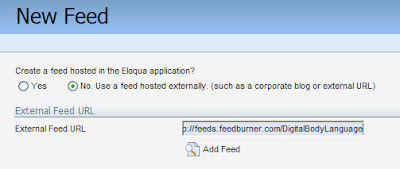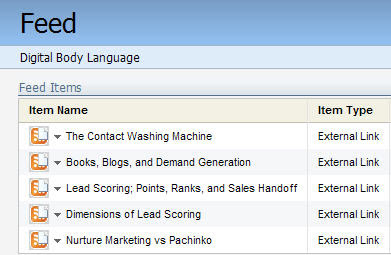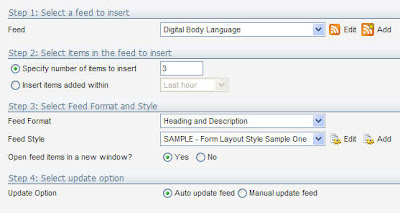Creating fresh, interesting content about your industry can be a tough challenge. I think we all know a marketer (not us, of course, but someone we know) who has run out of ideas after a few months of creating content, and because of that, a marketing campaign falls flat. B2B marketing usually involves quite a bit of buyer education and establishment of trust and expertise. This involves helping the prospective buyer learn about your industry, your market, your products on their own. That can take many months. That's a lot of content.
 So, here's a way to short-cut that. There are often numerous people within your industry, or even within your company who are creating content on a variety of blogs. You, being in the industry, are probably tracking it all in great detail. Use that to help educate your audience.
So, here's a way to short-cut that. There are often numerous people within your industry, or even within your company who are creating content on a variety of blogs. You, being in the industry, are probably tracking it all in great detail. Use that to help educate your audience. The bloggers will enjoy the free exposure, your audience gets rich content, and you look like a hero for producing a great monthly education piece without the usual late nights of content creation.
In the "Feeds" area, under "Communicate", add a feed from a good industry source. All you have to do is drop in the URL for the RSS of the feed. I'll grab the feed for the Digital Body Language blog (the sister blog of this one), and add it in.
 Eloqua automatically grabs the feed content and makes it acessible for you to use anywhere you like. Emails, hypersites, etc, can all have the content automatically dropped in just by adding a reference to the feed. Any clicks on the feed items will also be tracked as part of that person's profile.
Eloqua automatically grabs the feed content and makes it acessible for you to use anywhere you like. Emails, hypersites, etc, can all have the content automatically dropped in just by adding a reference to the feed. Any clicks on the feed items will also be tracked as part of that person's profile.You can, of course, create the feed items directly from content within Eloqua, but more on that another time.
Now you're ready to use the feed content in your own marketing. I'll go through an example of dropping it into an email, but the same applies in Hypersites if you want fresh content on your landing pages.
In the email editor, at the bottom of the editor, you'll have a link for "Insert Feed" if you have the capability enabled. Put your cursor where you want to insert the feed content (often a side-bar is the best bet) and click Insert Feed.
 You'll be presented with a dialog box that lets you configure how you want to work with this feed - don't worry, you can always click on the feed content to change the settings later.
You'll be presented with a dialog box that lets you configure how you want to work with this feed - don't worry, you can always click on the feed content to change the settings later.Essentially, you're picking how many items you want to insert, what style and appearance you want, and whether you're inserting the content once, as static content, or in real time as the email is sent.
Unless you have a specific set of content you are interested in, the best bet is an automatically updated feed, as it pulls fresh content on the fly.
That's all you need to do, now your email contains a feed from the blog you have picked, and you can see what topics are of interest to your audience out of those blogs.
This is a new area for us, so if you've started using it and have an interesting story, or feedback on it, I'd be very interested in hearing from you. I know that it's popular in both Sports Marketing (lots of interesting post-game commentary), and Financial Services organizations (plenty of up-to-the-minute market news), but if you're using this in a different way, drop me a line and let me know your thoughts.



4 comments:
Hi, great post. Do you have any tips on formatting the RSS better? I plopped mine in to a html e-mail and the layout got all jacked up. Maybe I should be putting it in a content section (eCollateral) instead?
Ben,
Sorry for the delay on this, thanks for the comment. Someone from the team will reach out to you to see what the challenges are - should be fairly flexible formatting there.
Is there any way to trigger emails to contact groups or program members based on when the rss feed content changes?
Chris,
Unfortunately, not that I know of... good thought though.
Steve
Post a Comment